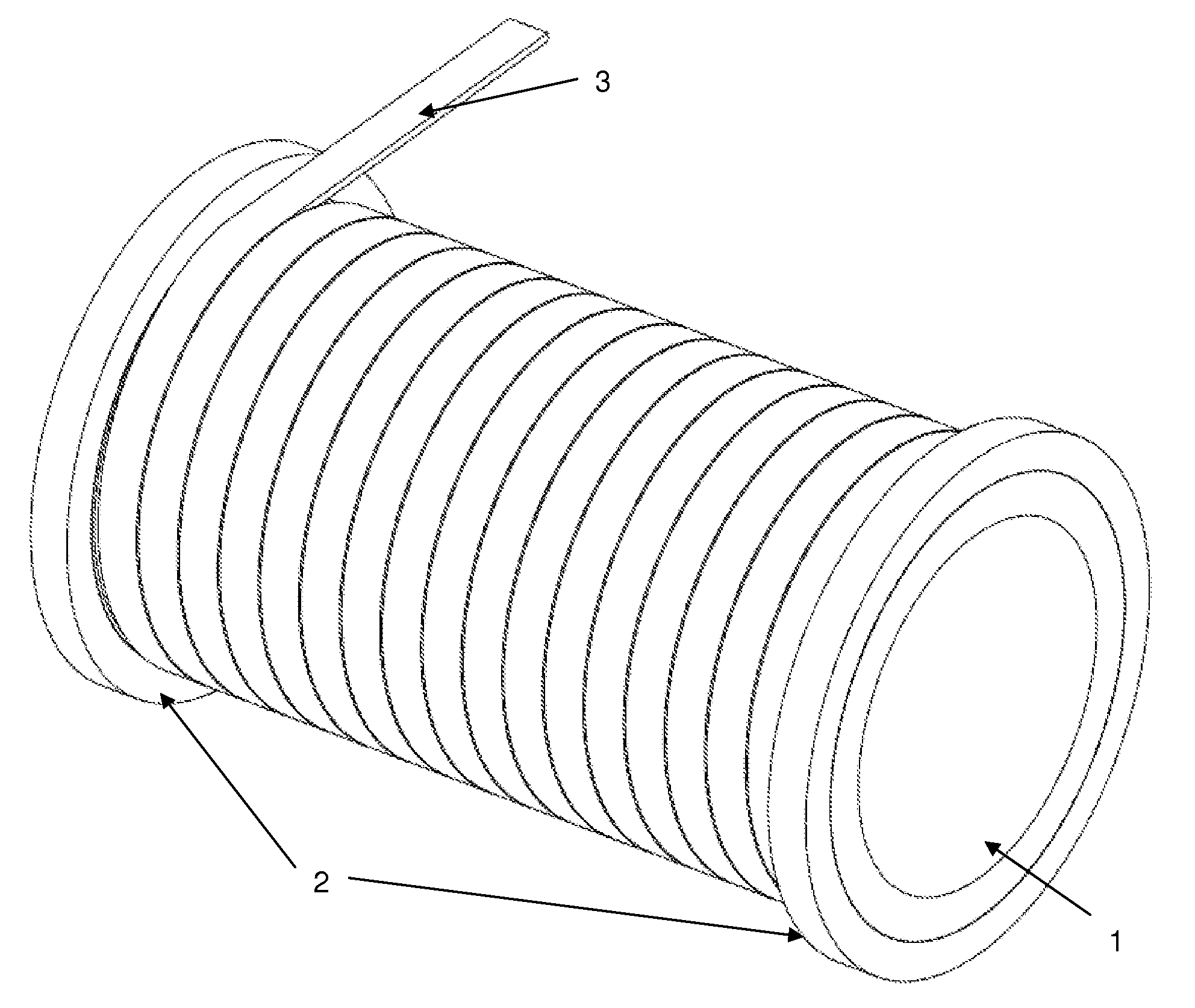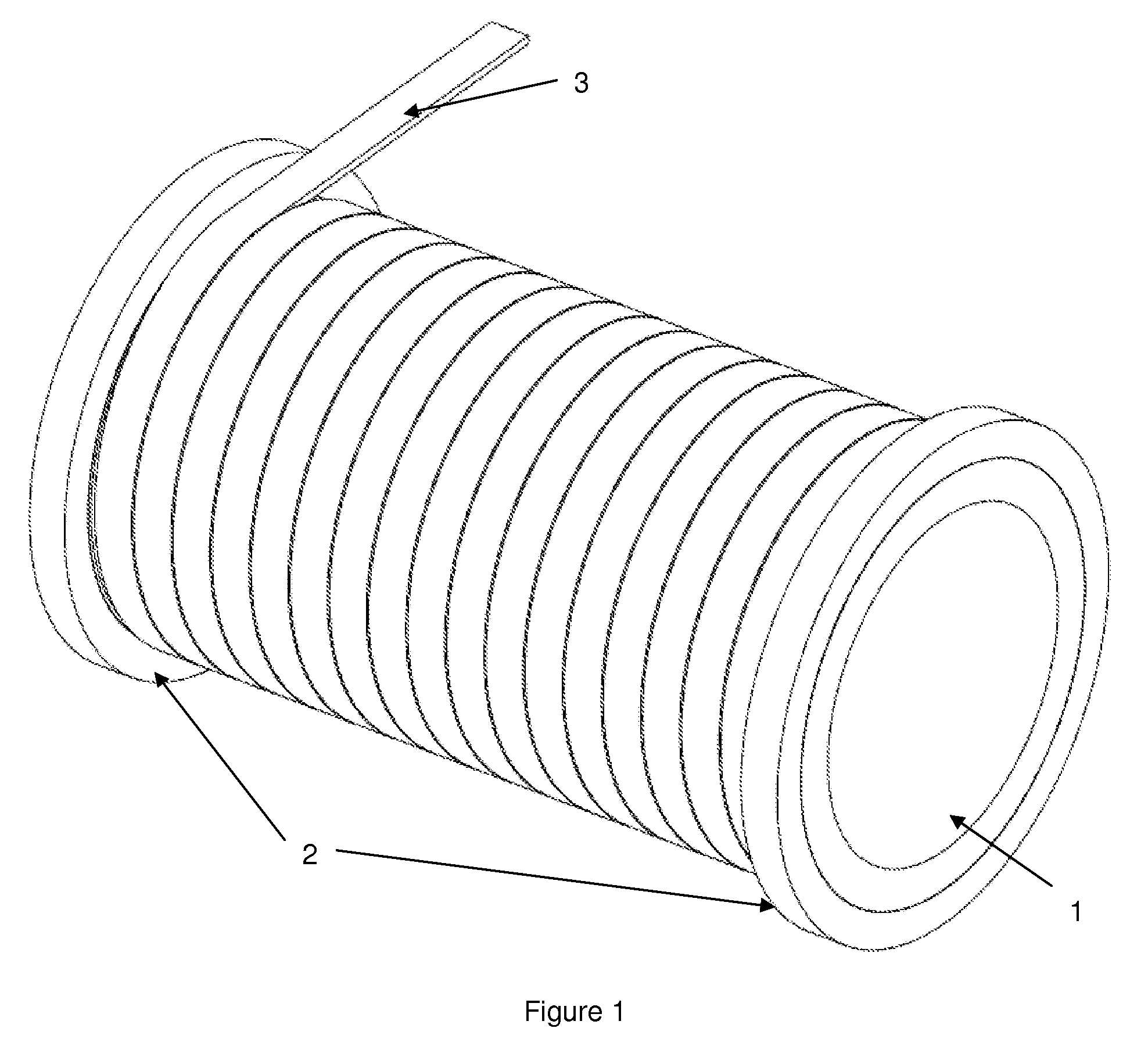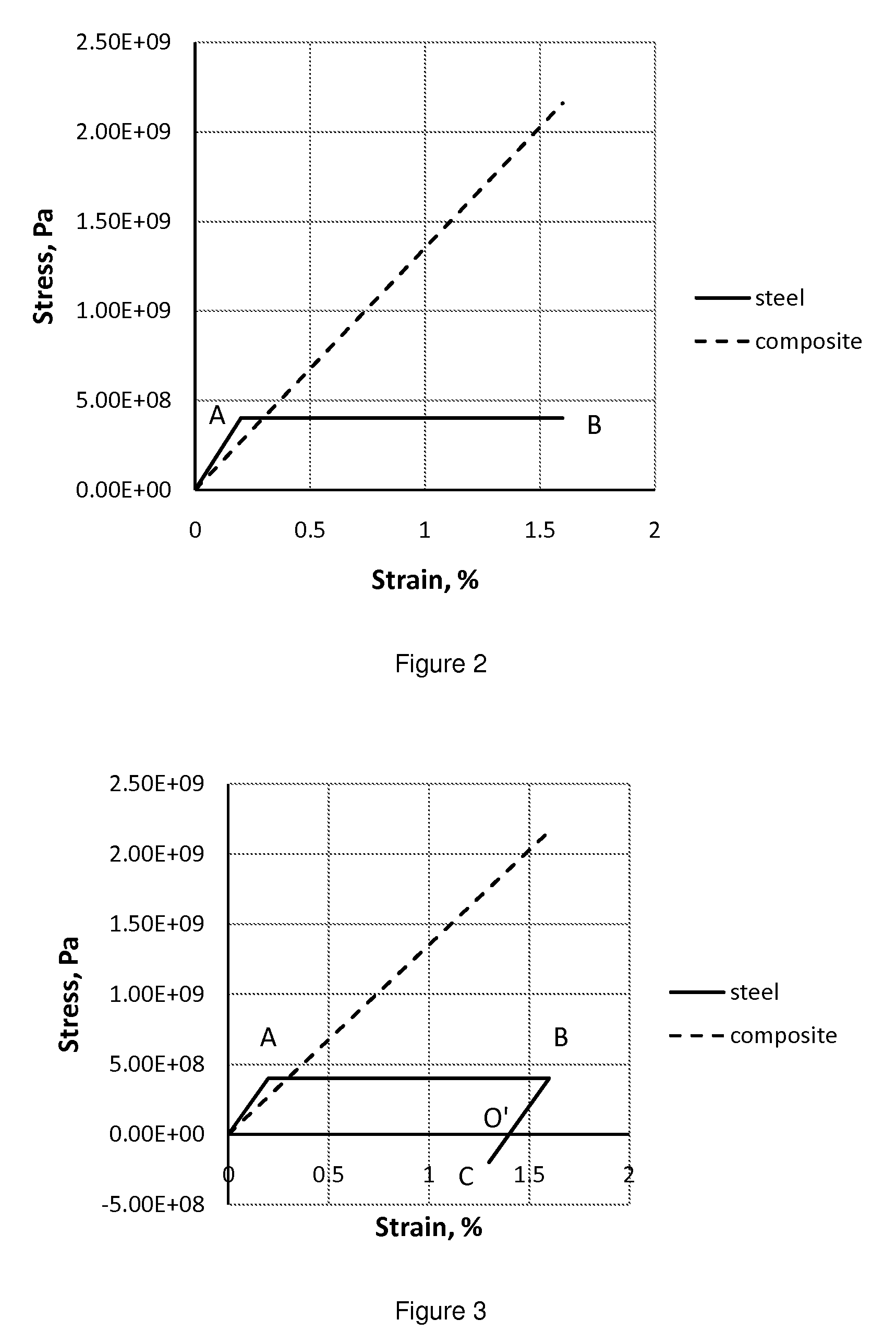Method of manufacturing and structure of prestressed composite reinforcements
a composite reinforcement and prestressed technology, applied in the field of composite reinforcement bandages, can solve the problems of reducing the precompression of the ceramic liner at elevated temperatures, imposing tight restrictions on the accuracy of both the sleeve and the liner, and not achieving the specified combination of the goals of alternative reinforcement approaches presented in literature and other inventions, and achieves a wide range of deformation.
- Summary
- Abstract
- Description
- Claims
- Application Information
AI Technical Summary
Benefits of technology
Problems solved by technology
Method used
Image
Examples
Embodiment Construction
[0030]If a cylindrical part is subjected to internal pressure or centrifugal loads, it is in most cases sufficient to provide radial reinforcement. This reinforcement could be implemented by direct winding under pretension using fiber reinforced tape. The type of the matrix is irrelevant as long as it satisfies the requirement of distributing the load among the fibers. All available matrix materials would generally be usable with a preference to thermoset, thermoplast polymer matrices and metal matrices. So either a fully cured thermoset fiber reinforced tape or tow, or a fiber reinforced thermoplast matrix tape or tow, or a fiber reinforced metal matrix tape or tow or any combination of such tapes or tows would be usable. As mentioned above, drawn steel wires or generally metal wires could also be suitable candidates for the reinforcement, if, for instance, application requires minimization of costs rather than minimization of weight, because steel wires are cheaper compared to pul...
PUM
| Property | Measurement | Unit |
|---|---|---|
| tensile strength | aaaaa | aaaaa |
| tensile strength | aaaaa | aaaaa |
| tensile strain | aaaaa | aaaaa |
Abstract
Description
Claims
Application Information
 Login to View More
Login to View More - R&D
- Intellectual Property
- Life Sciences
- Materials
- Tech Scout
- Unparalleled Data Quality
- Higher Quality Content
- 60% Fewer Hallucinations
Browse by: Latest US Patents, China's latest patents, Technical Efficacy Thesaurus, Application Domain, Technology Topic, Popular Technical Reports.
© 2025 PatSnap. All rights reserved.Legal|Privacy policy|Modern Slavery Act Transparency Statement|Sitemap|About US| Contact US: help@patsnap.com



